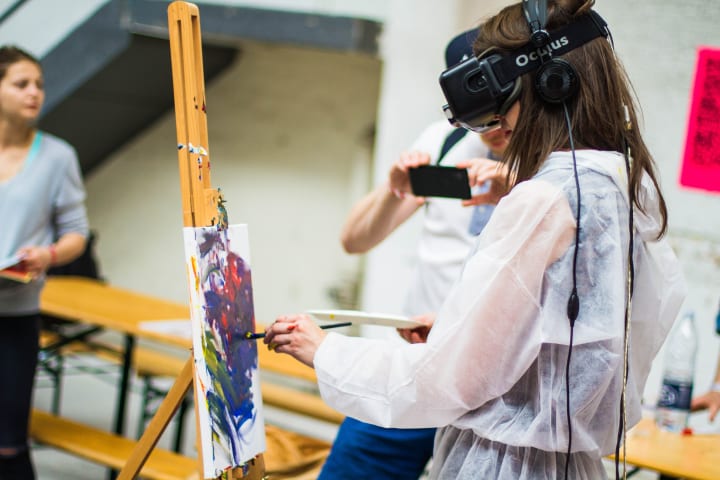How Virtual Reality Will Blur the Lines in 2018
The future is now, and reality will be closer to the net than ever before.

Virtual reality is no longer the stuff of science fiction; it's making leaps and bounds across all aspects of life. 2017 was a promising year for virtual reality because the tech proved to be very useful for a number of different industries.
Technical writer Anshel Sag summarized VR in 2017, stating that it struggled in the first half of the year, but rebounded in the second half due to the spotlight on new VR headsets and content. After proving its potential amid many people’s uncertainties, VR may be able to break more boundaries soon.
Many promising VR innovations are set to be unveiled this year, including some of the most highly anticipated advances in recent years. These advances, which often include "augmented reality" setups, have made it possible to see the virtual world as a part of the real world—or completely immerse users in a new, digital reality.
For example, let's take a look at how the film industry is using VR headsets that overlay details and enhance the world around viewers to give a more realistic movie experience.

The Verge revealed the best VR films at Sundance 2018, citing narratives revolving around alien abductions and battles against ancient evil. One project made use of experimental tech, where the user wears a custom force-feedback glove so he/she can feel real tension when pulling an object. Other VR films require more than one participant for a truly engaging experience.
In the manufacturing sector, factories are now seeing VR augmentation being implemented to streamline a typical day's work and reduce accidents. Many other groups are using virtual reality as a way to help cut down on costs or give full tours of a factory floor.
Additionally, VR is providing practical treatments in health care. Some companies have already invested in immersive VR therapy that can rehabilitate chronic pain sufferers. The idea is to educate patients about how pain works on different parts of the brain by training them to rely on a virtual avatar rather than their real bodies.
Furthermore, healthcare institutions are testing VR’s capabilities on educating professionals in specific fields, such as surgeons and ophthalmologists. In the future, perhaps virtual simulations will become a less expensive and safer alternative to operating on a live specimen.

Of course, virtual technology is also set to innovate the gaming industry further, considering it’s the field that pushed the tech to the mainstream. This year alone, gamers can expect more than 50 new and promising VR titles on the HTC Vive, Oculus Rift, and PlayStation VR. They span across different genres as well.
For example, you can look forward to Moss, a magical VR adventure game where players follow the journey of a brave mouse, or a more artistic game like Anamorphine, where you explore the dream-like memories of a troubled couple. However, even classic games are leaning towards virtual reality to level up the gaming experience.
Road to VR speaks of an online VR poker gamewith real prizes at stake. The game simulates an actual session of Texas Hold’em and people from all over the world can play with one another using either an Oculus Rift or a Samsung Gear VR. If you’ve never played a real game of poker, this is the next best thing.

If there’s one benefit VR brings, it’s the chance to learn certain things a lot more quickly. As mentioned earlier, health care professionals now use VR simulations to better understand medical procedures, while a game like Poker could take months to master.
Although there are other digital tools that can be used, as PartyPoker demonstrates, there are useful mediums such as podcasts to learn poker—as well as apps, and even music.
But, VR can provide a more engaging and immersive experience, and putting yourself in an identical scenario is, for all intents and purposes, a better way to learn. It brings the classroom to you, no matter where you are in the world.
The same can be said about art. Tools like Google’s Tilt Brush and the Oculus’s Quill allow people to paint in a 360-degree virtual space. These apps provide artists a better understanding of space and dimensions, providing the artsy crowd with more great mediums for expressing creativity.
The bottom line is that more and more industries are becoming open to the idea of incorporating VR into their operations. Others include real estate, tourism, automotive, and even fashion. It’s too early to say what VR will amount to this year, but there is no doubt it will continue to disrupt the global market.
About the Creator
Patricia Sarkar
Raised on a steady diet of makeup and games. Eager to share my experiences with the world and make a difference, article by article! :)






Comments
There are no comments for this story
Be the first to respond and start the conversation.